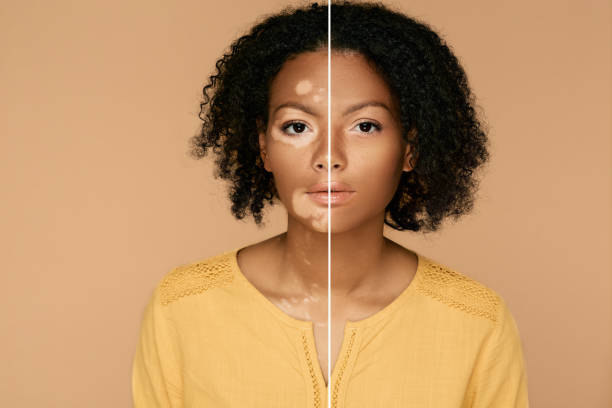What’s pigmentation?
Pigmentation, also known as hyperpigmentation, is a term that describes patches or spots that are darker than the rest. This happens when the skin produces more pigment, which is responsible for giving it its color. It is a common condition that affects all skin types.
Patches can vary in size and develop anywhere on the body. The biggest risk factors for general hyperpigmentation are sun exposure and inflammation, as both situations can increase melanin production. The greater your exposure to the sun, the greater your risk of increased skin pigmentation.
Hydroquinone is considered by many to be the standard gold treatment for pigmentation.
Skin pigmentation disorders
There are many ways skin discoloration can occur. These include:
- Age spots
- Sunspots
- Melasma (usually occurs on the face, on women, and in darker skin tones). Chloasma, also known as Melasma, is also common during pregnancy.
- Hyperpigmentation After injury/inflammatory hyperpigmentation (most prevalent in darker skin tones)
What causes pigmentation?
- Sun exposure. Sun exposure increases the amount of melanin in the skin to protect against UV radiation. Sunspots are the result.
- Skin inflammation, such as eczema and lupus, and injury. Although inflammation is the body’s way to fight unwanted invaders, it can also cause skin damage and turn on itself. Severe trauma can be more difficult to treat because it can cause leakage into the dermis (second skin layer) and trapping.
- Hormone Changes –common during pregnancy and as a side effect of birth control
- In 10-20% of cases, side effects can be the reason!
- Medical conditions, such as hormone-disrupting Addison’s disease or Hemochromatosis.
- Genetics – thanks, mom.
How can I get rid of pigmentation?
There are several things you can do to prevent or reverse the effects of this condition.
Lifestyle changes
- Limit your sun exposure. Wear a hat when you are out in the sun, and apply sunscreen with at least 30 SPF every 2 hours.
- Protective makeup is a good choice. Shari Marchbein, a New York City dermatologist, suggests that you choose products with iron oxide to block visible light. Guess what? You don’t have to be ashamed that we also offer a translucent powder with SPF 30!
- Don’t pick! It can be tempting to pick at skin spots, but the greater the risk of skin discoloration, the more you do it.
- Natural remedies. A variety of natural remedies have been suggested by some studies, including:
- Aloe vera. Aloesin, a compound found in this amazing plant, may lighten dark spots by inhibiting melanin production.
- Glabridin, an extract found in Liquorice, has been shown to have anti-inflammatory and skin-whitening properties, according to research.
- Green tea. What is it capable of? Researchers have studied the hot beverage of the moment has been studied for anti-inflammatory potential by researchers for years.
- Vitamin C. This wonder vitamin is highly effective in brightening the skin. It also inhibits melanin production and protects from UV-related damage.
Treatments
- Topical treatments. Many over-the-counter products can help you lighten your skin.
- Exfoliants can help reduce dark spots in the upper skin layer.




